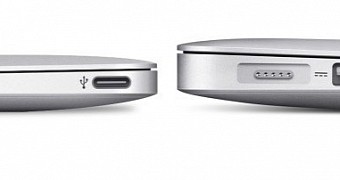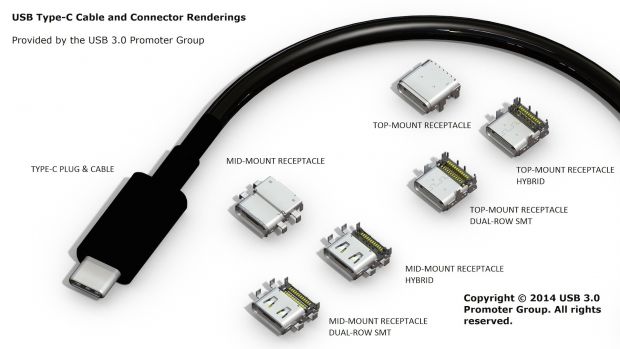A leak from within Apple suggests that this year will mark the introduction of USB Type-C connectors as a widespread spec for the first time.
Knowing how the California computer company drove similar changes for the industry in the past, I can’t help but see that history is repeating itself in 2015.
MacBook Air leak
A 12-inch MacBook Air reportedly launching later this year with a more compact design will be the first Apple device to adopt the USB 3.1 specification known as USB Type-C, a reversible plug similar to the iPhone’s Lightning port in nature, with enough pins to give it a large array of purposes, including charging the laptop.
That’s right, Apple is not only ditching traditional USBs, it’s also foregoing its own MagSafe charging standard in favor of the more exotic, multipurpose Type-C plug.
The only problem is that, according to the leak, the computer will sport a single such connector, making it somewhat imperative for the Mac makers in Cupertino to introduce accessories (hubs, adapters) to permit multiple external connections. But that’s another story.
Apple’s third victim since HDD
Constantly at the forefront of technology, Apple prefers to drive change, rather than to be pushed from behind. It was the case with solid-state drives (SSD) replacing traditional platter-based hard drives (HDDs) in most portable Macs, as well as with optical media, which is nearly extinct across the entire Macintosh lineup.
Killing traditional USB on all Macs would be the third such more in just as many years, but it will take a lot more time than it did with those aforementioned technologies. USB is one of the most enduring standards since the ‘90s, and most electronics today (not just computers) have at least one such connector, albeit with different size variations.
But I don’t see anything stopping Apple from moving forward with plans to eventually discontinue the standard from its own products, and here’s why.
The fated will happen
The list of advantages involving USB 3.1 Type-C connectors is so long that there’s no practical reason to keep traditional USB (2.0 and 3.0) around. For one thing, it’s reversible – it connects either way, like the iPhone's Lightning plug – which eliminates a major pain in the neck.
It can charge a laptop and it even drives video (for external monitors).
Remember the news about Europe’s regulators demanding Apple to adopt a universal charging standard for iDevices to combat e-waste? Guess what? They’re doing it for laptops before the EU Commission moves into PC territory with similar demands. I repeat: it’s better to drive change than be forced to adjust your practices. So e-waste will also be diminished thanks to the adoption of USB Type-C, even though it will take a long time before it happens across the industry.
A jack of all trades, USB Type-C will make normal USB on the same computer look redundant. And these are just the scenarios involving regular users. There’s actually more to USB Type C than meets the eye.
According to Wikipedia, “Alternate Mode dedicates some of the physical wires in the Type-C cable for direct device-to-host transmission of alternate data protocols. The four high-speed lanes, two sideband pins, and - for dock, detachable device and permanent cable applications only - two USB 2.0 pins and one configuration pin can be used for Alternate Mode transmission. The modes are configured using VDMs through the configuration channel. As of December 2014, Alt Mode implementations include DisplayPort 1.3 and MHL 3.0; other serial protocols like PCI Express and Base-T Ethernet are possible.”
Even Apple will take it slow this time around
Despite being among the first to adopt USB Type-C, Apple will be forced to keep traditional USB connectors around for at least a few more years. The main reason is that people will continue to use their existing USB accessories (drives, cameras, data transfer cables, etc.) for a long time. It would be unfair even to iPhone 6 owners to completely switch lanes, since the handsets don’t do inductive charging and iTunes syncing still requires a tethered connection most of the time.
Mac users will also continue to rely on existing USB accessories for years. But make no mistake: the clock is ticking for today’s USB plugs, and you shouldn’t feel too sad about it. It’s the type of progress that impacts every aspect of the product, from form to function. And not in a bad way.

 14 DAY TRIAL //
14 DAY TRIAL // 

